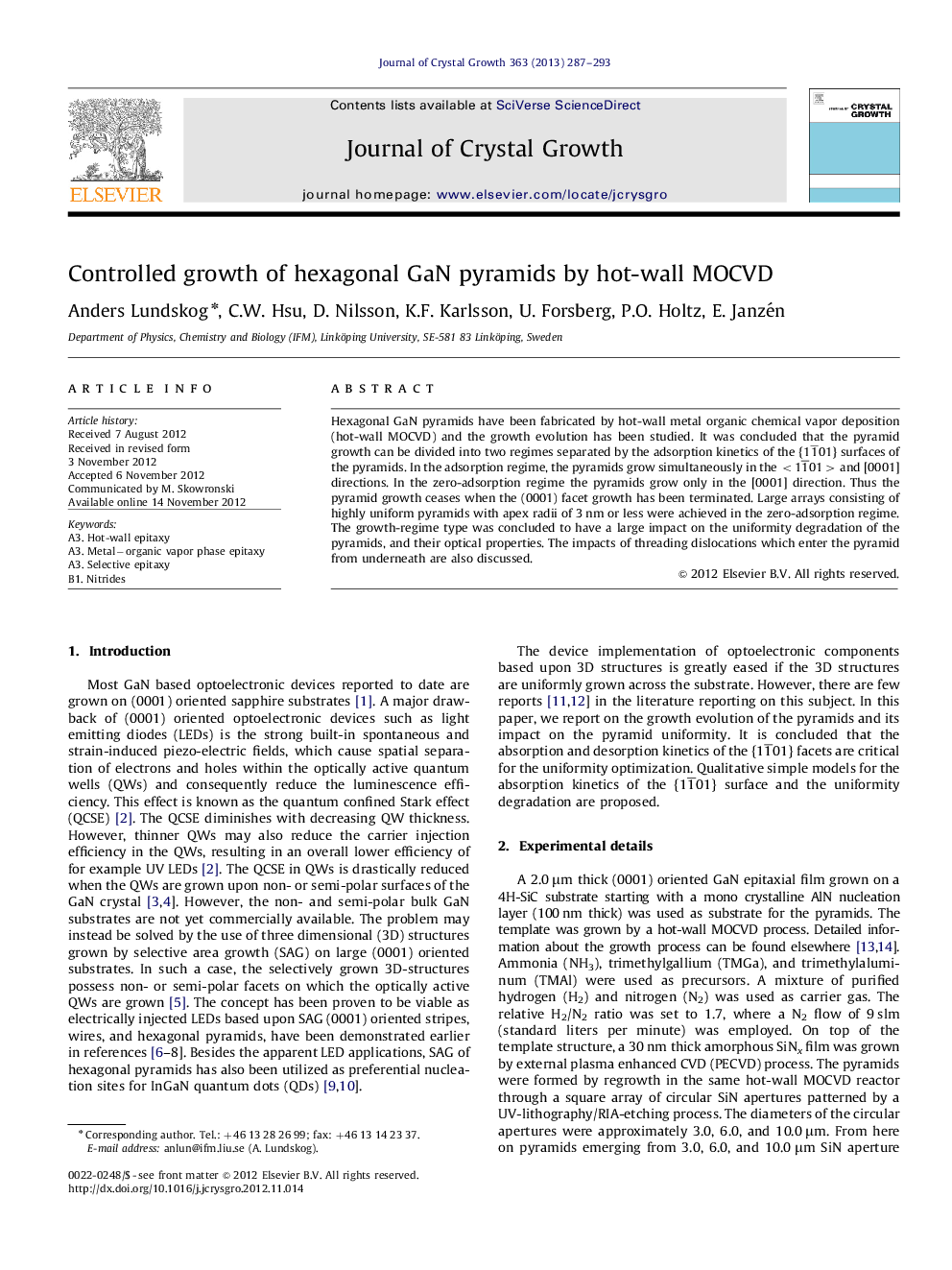| Article ID | Journal | Published Year | Pages | File Type |
|---|---|---|---|---|
| 1791391 | Journal of Crystal Growth | 2013 | 7 Pages |
Hexagonal GaN pyramids have been fabricated by hot-wall metal organic chemical vapor deposition (hot-wall MOCVD) and the growth evolution has been studied. It was concluded that the pyramid growth can be divided into two regimes separated by the adsorption kinetics of the {11¯01} surfaces of the pyramids. In the adsorption regime, the pyramids grow simultaneously in the <11¯01> and [0001] directions. In the zero-adsorption regime the pyramids grow only in the [0001] direction. Thus the pyramid growth ceases when the (0001) facet growth has been terminated. Large arrays consisting of highly uniform pyramids with apex radii of 3 nm or less were achieved in the zero-adsorption regime. The growth-regime type was concluded to have a large impact on the uniformity degradation of the pyramids, and their optical properties. The impacts of threading dislocations which enter the pyramid from underneath are also discussed.
► Growth evolution of selective area grown hexagonal GaN pyramids reported. ► Adsorption/desorption kinetics on the {11¯01} facets on pyramids have major impact on the resulting non-uniformity of the hexagonal pyramids. ► Pyramids with nm-sized apices were achieved when the adatom adsorption/desorption on the {11¯01} facets cancels. ► Mechanism of uniformity degradation discussed. ► Optical characterization results of hexagonal pyramids reported and discussed.
